Embed presentation
Download to read offline
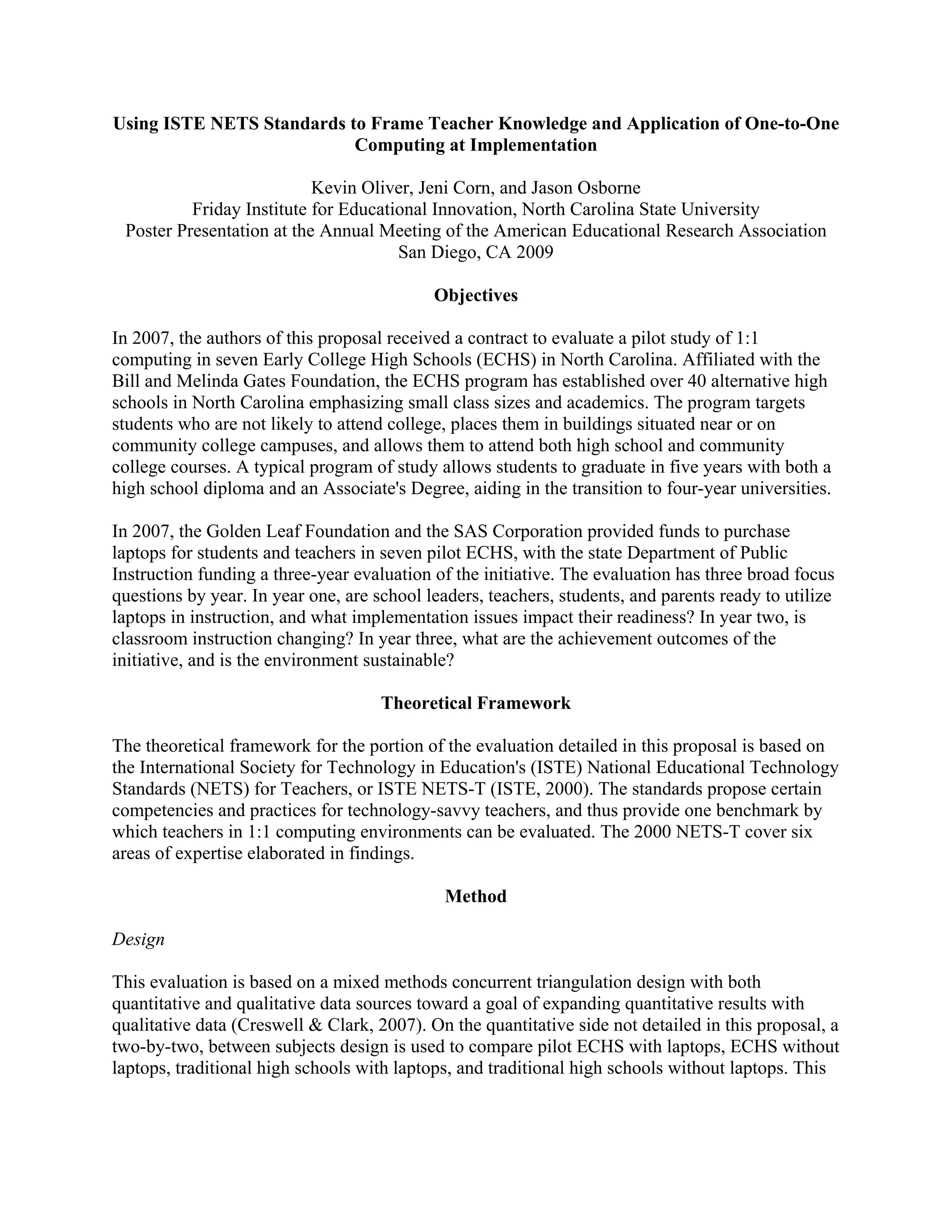

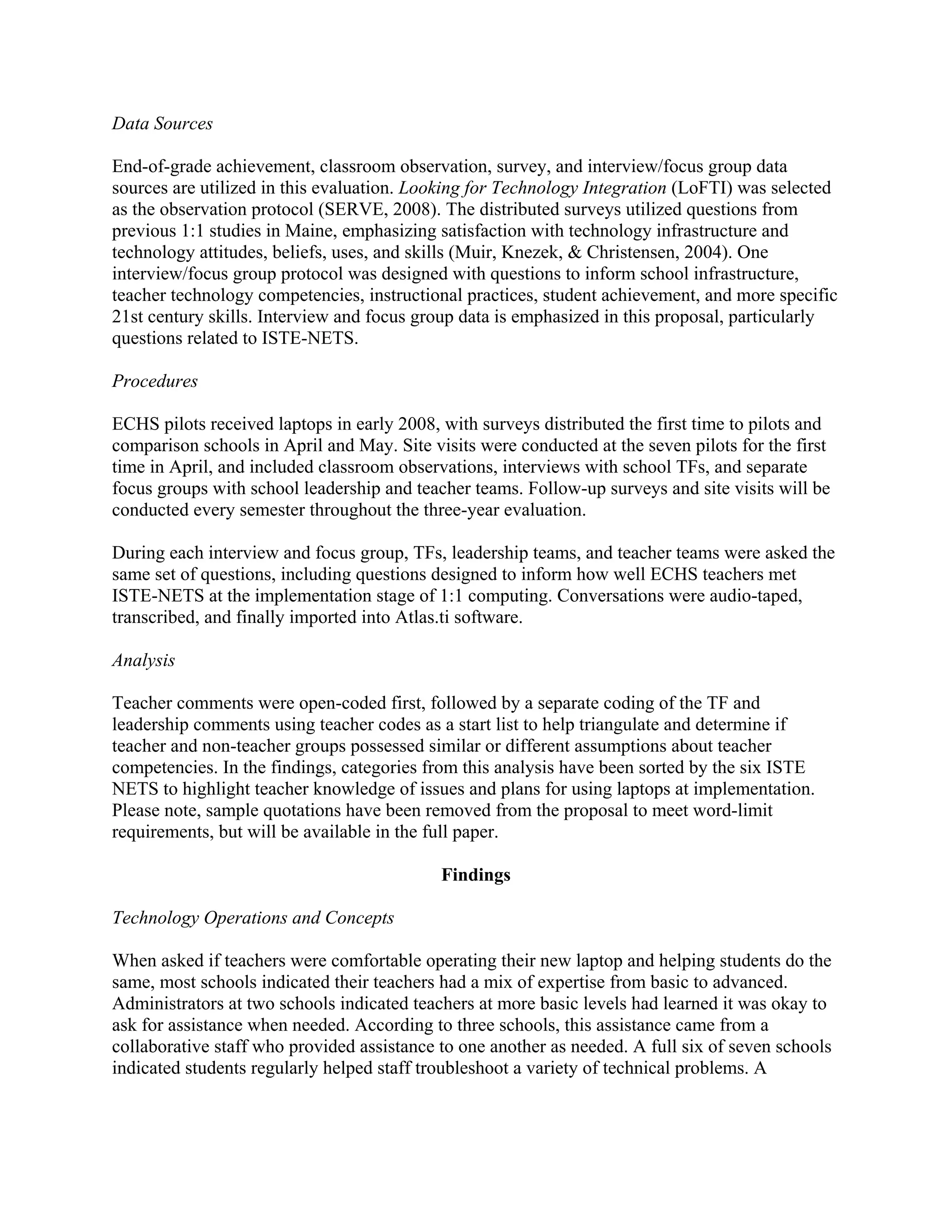
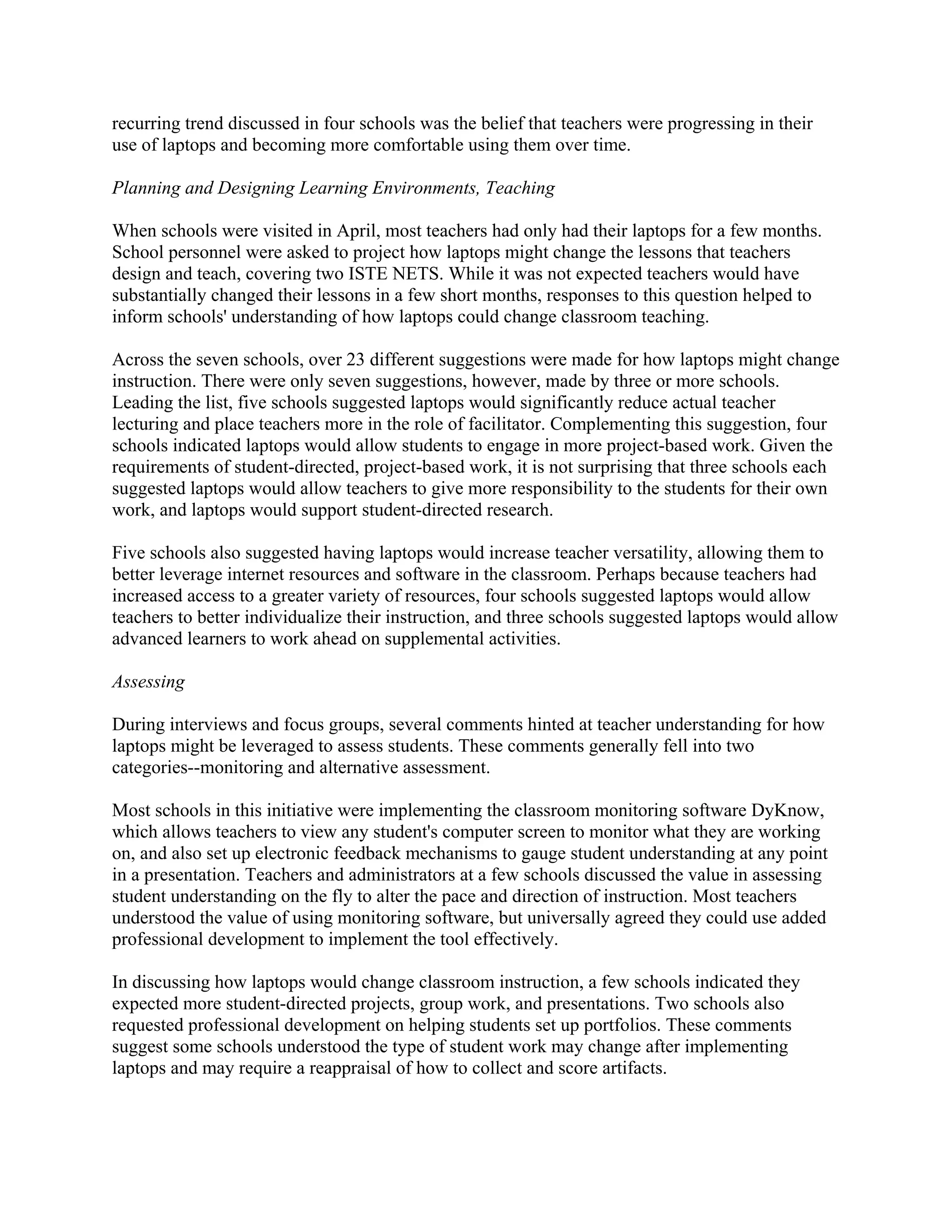
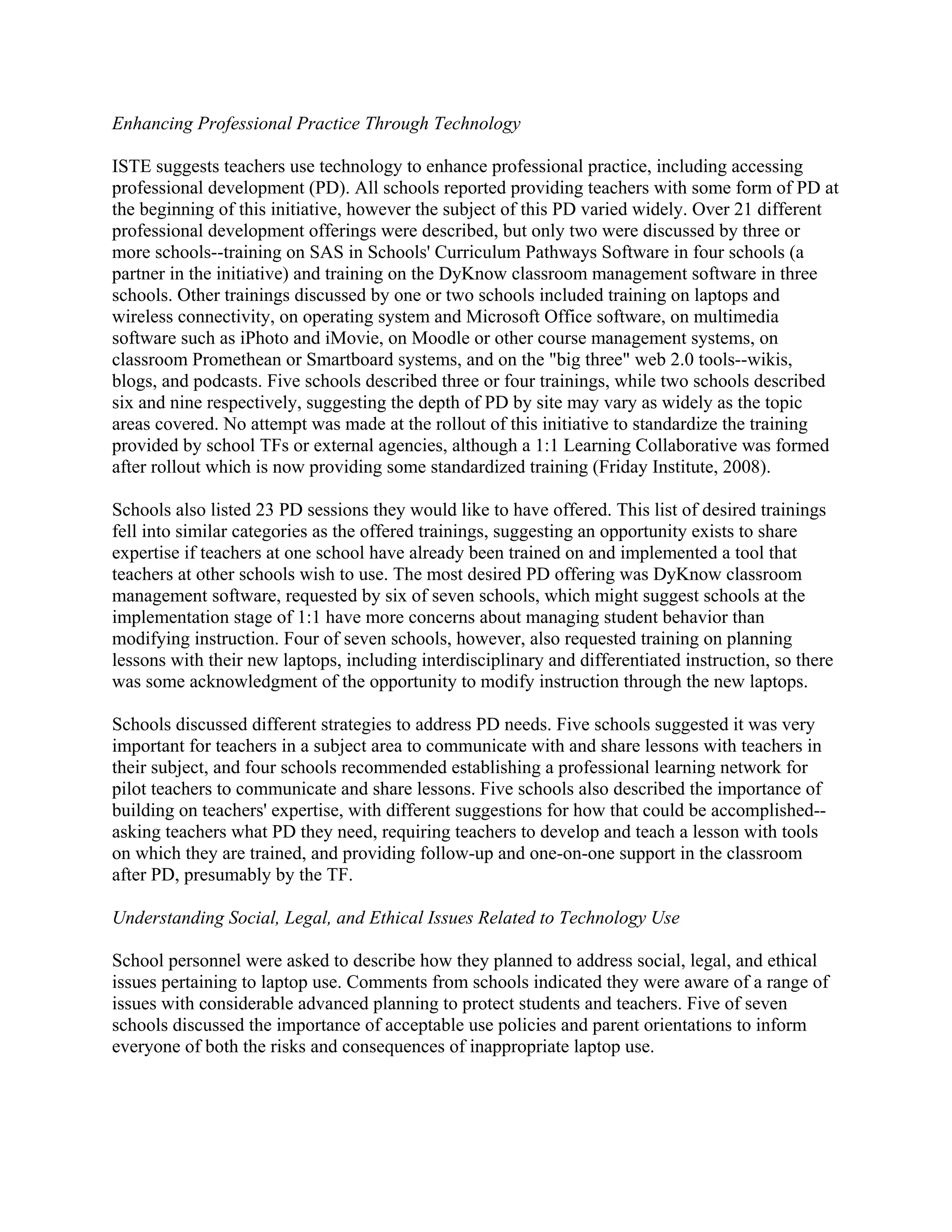
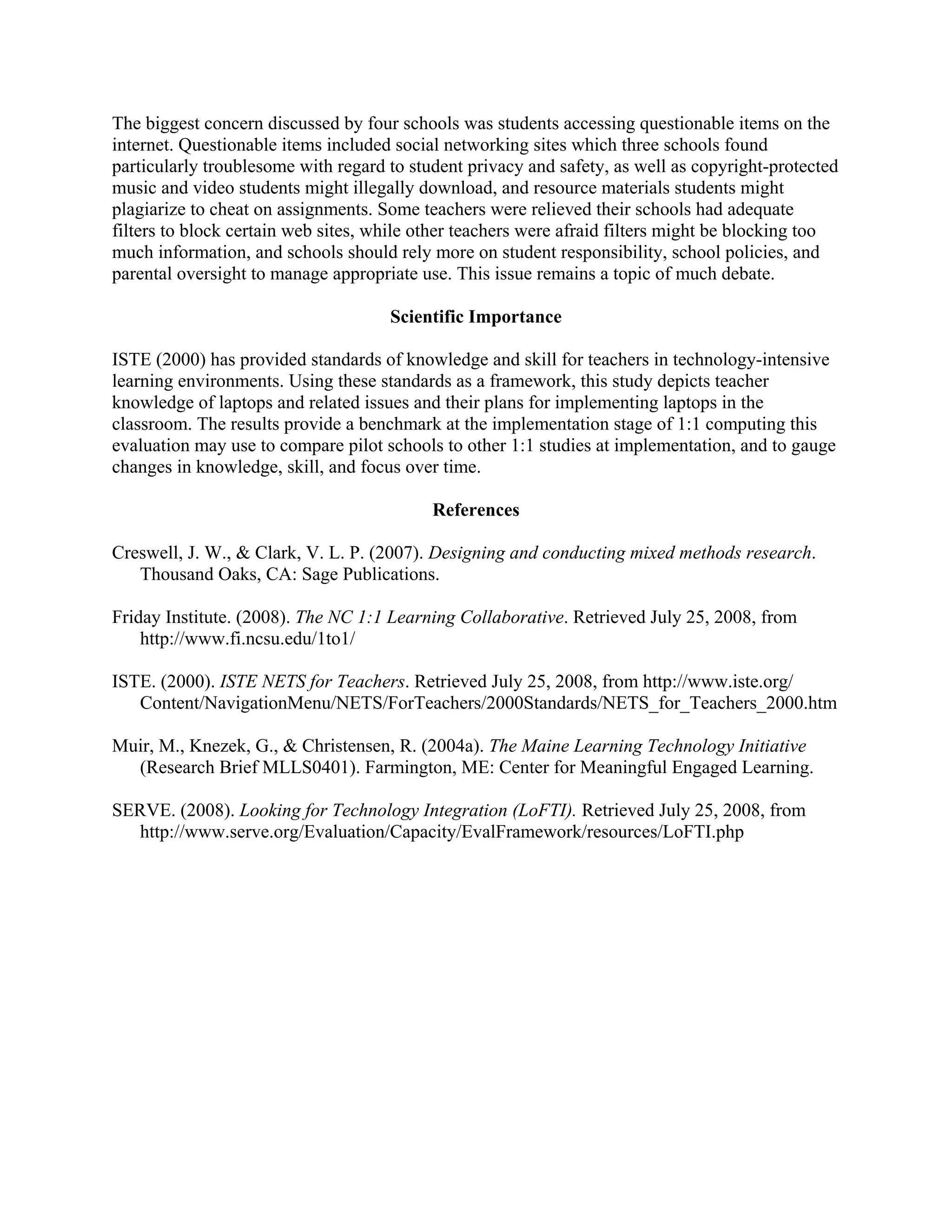
This document summarizes a study that evaluated how teachers in seven North Carolina early college high schools applied their knowledge of technology standards (ISTE NETS) after being provided laptop computers for classroom instruction. Teacher interviews revealed that while technical skills varied, teachers were progressing in laptop use over time. Teachers expected laptops to reduce lectures and increase student-centered projects and research. Analysis of teacher responses showed understanding of how laptops could enhance monitoring, assessment of student work, and professional development, as well as address ethical and legal issues of technology use. The study provides a baseline for comparing teacher knowledge as laptop integration evolves over three years.





